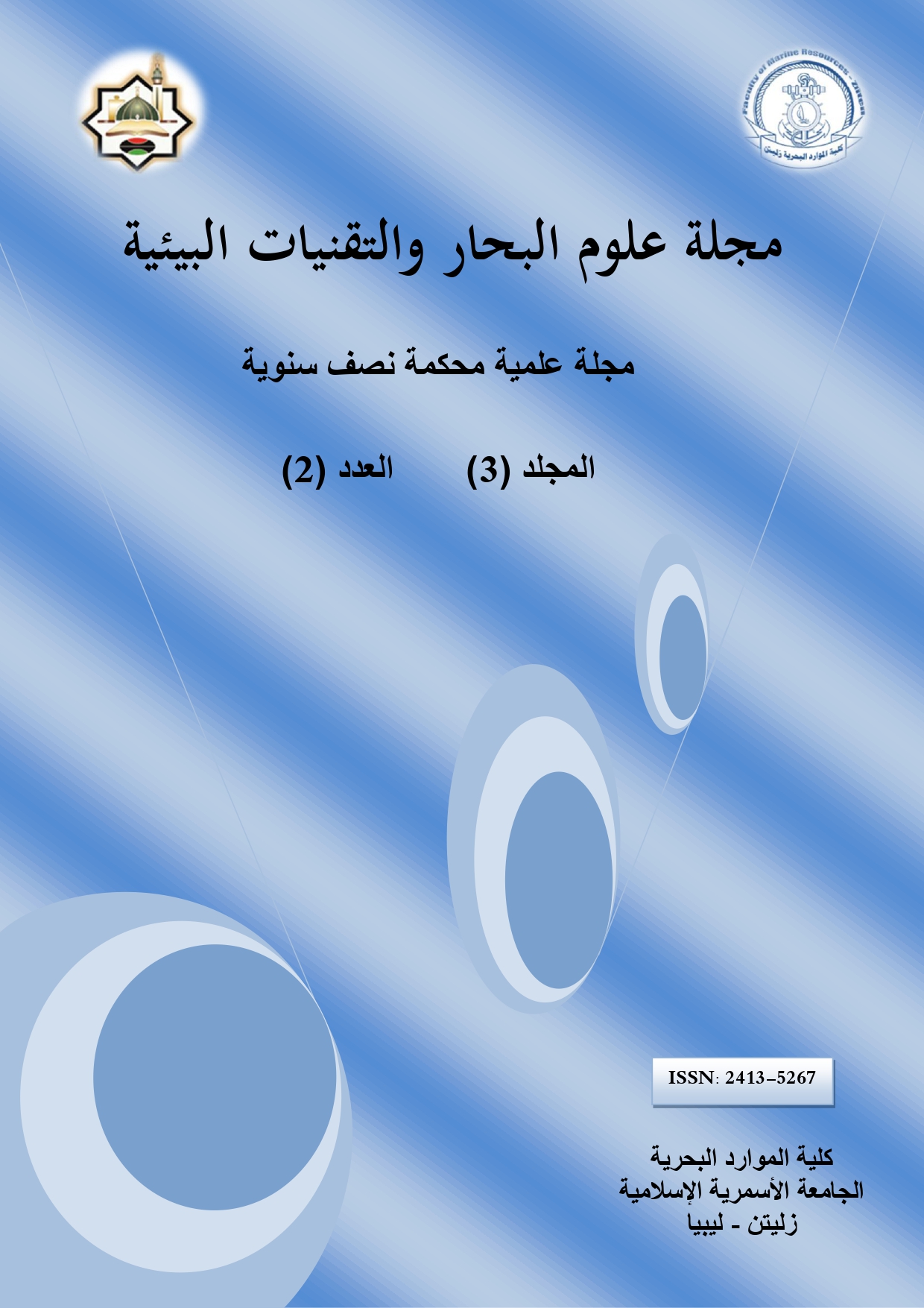دراسة لنوع جديد من الطوب الجير الرملي بإضافة البولي ستايرين والجبس
DOI:
https://doi.org/10.59743/jmset.v3i2.91الكلمات المفتاحية:
الطوب، قوة الإنضغاط، الجبس، الجير، بولي ستايرينالملخص
العيب الرئيسي لمواد الجير هو امتصاصها الماء بسهولة، ويسبب ذلك وميضاً عندما لا تتعرض للهواء. إضافة إلى ذلك، الوزن الثقيل جدا والسطح الخشن للطوب المصنع منها، الأمر الذي قد يسبب نمو العفن. وقد ركزت البحوث التي أجريت في هذا المجال دائما على المتانة والقوة. إن التحدي المتمثل في المتطلبات الحديثة والجديدة، والحاجة إلى مباني منخفضة التكلفة ومستدامة لمتطلبات الناس، بالإضافة إلى نقص المعرفة في هذا المجال تبرر الحاجة إلى مزيد من البحوث التي تركز على قوة الطوب خفيف الوزن وسعة امتصاص طوب الرمل الجيري. لذا فإن استخدام البولي ستايرين له العديد من المزايا في مواد البناء. تقدم هذه الدراسة نتائج التحقيق التجريبي الذي تم إجراؤه لإيجاد النسبة المثلى لخلط الطوب الجديد. تم صب عينات من الطوب بالأبعاد 150مم×150مم×150مم بنسب مختلفة من مزيج من البولي ستايرين والجبس والجير والرمل. وأظهرت النتائج تباين مقاومة الانضغاط لنسب خليط مختلفة من المواد المذكورة. وقد تم تحديد قوة الانضغاط، والقدرة الاستيعابية، والعزل الحراري للطوب الذي تم إنتاجه حديثا مع التركيب الأمثل بمختلف المطابع التي تصنع بالطوب. وأظهرت نتائج هذه الدراسة أنه كان من الممكن إنتاج طوب هيكلي جيد النوعية خفيف الوزن مقارنة مع الطوب الإسمنتي.
التنزيلات
المراجع
Rahim A.S.B.A., and Jamil H.H.B. (2014). Utilization of Mosaic Sludge Waste into Fired Clay Brick: Properties and Leachability. Advanced Materials Research,1025: 117-121.
Liu H., Banerji S.K., Burkett W.J., and Van Engelenhoven J. (2009). Environmental properties of fly ash bricks. World of Coal Ash Conference Proceeding, WOCA in 4-7 May, Lexington, KY, USA..
Al-Wakeel E.I., El-Korashy S.A., and Uossef H.N. (1999). Promotion effect of C–S–H phase nuclei on building calcium silicate hydrate phase. Cem. Concr. Res., 21:173–180.
Kayali O. (2005). High performance bricks from fly ash. World of Coal Ash Conference Processing, WOCA in 9-11April, Lexington, KY, USA.
Poon C.S., Kou S.C., and Lam L. (2002). Use of recycled aggregates in molded concrete bricks and blocks. Construction and Building Materials, 16(5): 281-289.
Mosalam K., Glascoe L., and Bernier J. (2009). Mechanical Properties of Unreinforced Brick Masonry, Section 1 (No. LLNL-TR-417646). Lawrence Livermore National Laboratory (LLNL), Livermore, CA.
Rai D.C., and Goel S.C. (2007). Seismic strengthening of rocking-critical masonry piers. Journal of structural engineering, 133(10): 1445-1452.
Ewing B.D., and Kowalsky M.J. (2004). Compressive behavior of unconfined and confined clay brick masonry. Journal of Structural Engineering, 130(4): 650-661.
Vintzileou E.N., and Toumbakari E.E..E. (2001). The effect of deep rejointing on the compressive strength of brick masonry historical constructions. Lourenço P. B., Roca P. (Eds), Guimarães, Spain.
Banu T., Billah M.M., Gulshan F., and Kurny A. (2013). Experimental studies on fly ash-sand-lime bricks with gypsum addition. Am. J. Mater. Eng. Technol., 1(3): 35-40.
Osula D. O. (1989). Evaluation of admixture stabilization for problem laterite. Journal of transportation engineering, 115(6): 674-687.
Nowek M. (2016). Performance of sand-lime products made with plastic waste. 1st International Conference on the Sustainable Energy and Environment Development (SEED 2016). May 17-19, Kraków, Poland.
Taib M. (2011). The mineral industry of LIBYA. Minerals Yearbook Area Reports: International Review, 2009, Africa and the Middle East.
التنزيلات
منشور
إصدار
القسم
الرخصة
الحقوق الفكرية (c) 2017 مجلة علوم البحار والتقنيات البيئية

هذا العمل مرخص بموجب Creative Commons Attribution 4.0 International License.












